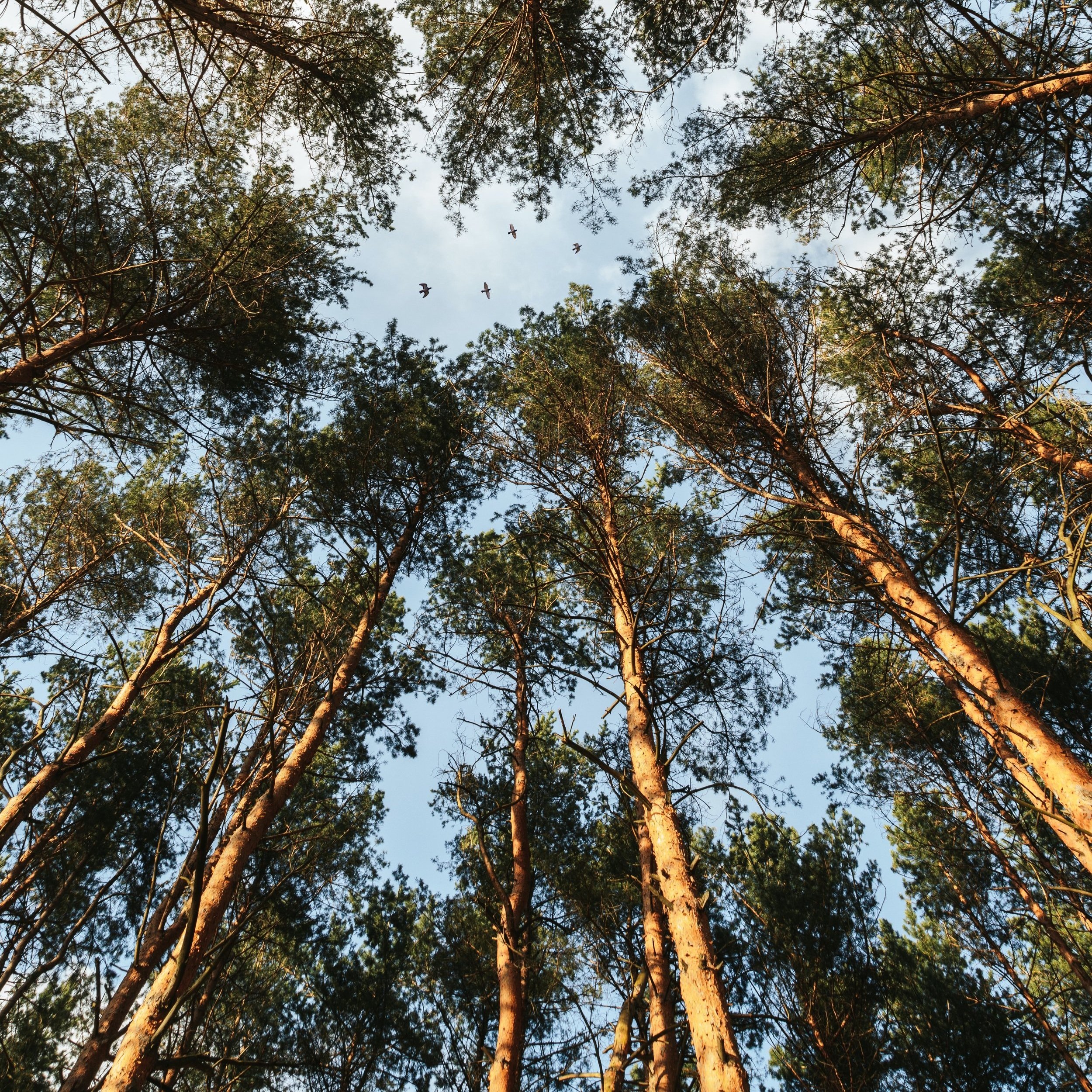Why paint from life?
Your incredible eyes
If you are lucky enough to have two working eyes to the front of your skull, your brain is constantly receiving two slightly different images - one from the left, one from the right. You can take steps to control it (eg shut one eye), but unless you do, any painting from observation will be a subtle combination of the two different perspectives.
Photo by Nikita Pishchugin on Unsplash
Imagine you are standing in a forest in the middle of a ring of pine trees. As you look up, the trees appear to converge around you, to a vanishing point somewhere in the sky. The tree directly in front of you appears perfectly vertical, those to left and right appear to lean towards it. If you turn your head slightly, then a different tree seems vertical, and the one that was vertical before is now bent. Depending on your head position, perspective causes everything to bend to fit.
When you look at a subject, your eyes stretch their lenses to focus on whatever they’re pointed at. In the image sent to your brain, the surrounding area is blurred, and has less distinct colours. It’s also upside down, rather like this:
Photo by Delia Giandeini on Unsplash
For hunting & gathering reasons, our attention is drawn to difference… it’s easier to spot insects (be they poisonous or delicious) when they’re moving; Red berries look more intensely red against green leaves.
Your incredible brain
High five to your occipital lobe, for resolving all these signals on the fly, to enable your body to deal with the world outside your skull. Without you even having to give it a second thought, your brain makes unconscious decisions about which image to use when.
Our eyes and brain are a unique reflection of our genetics and environment. So it follows that the way in which we see, prioritise and process these myriad images of the world is absolutely individual. What sort of red is that berry? What is the tilt of that branch?
While painting, artists make deliberate choices about composition, colour, style, etc. These choices relate to the artist’s selected aims and methods. But the observed information fed into that process, the artist's view, depends on the unique mechanics of their eye.
However much an artist may change or evolve their conscious technique, the uniqueness of their visual observation underpins it, and is largely beyond their control.
Playing with observation
Paul Cezanne used to subtly tilt objects with coins etc, to bring his still lives to life. This short video gives an interesting insight into what made his work so distinctive. Whether you paint or not, the coin thing is fun to try at the dinner table!
Cubists took it a step further, and deliberately combined different views of their subject within the image:
Alice Bailly - “Jeu d’eventail” (playing with a fan) 1913
We are connected
Painting from life is a journey of information from the physical world, through the artist’s nervous system, onto the canvas. When the canvas is seen, the viewer takes a journey back the other way, through the artist’s eye onto the scene at the time of painting.
The camera never lies sees
Modern cameras are incredible machines, they make colour, shape, and value choices, either directed by the user or automatically. In skilled hands, they do a really good job of representing what we think we see. The camera’s ability to ‘fix’ an image is very appealing, especially if you’re painting on a windy day, drawing people in motion, or chasing the light (the shadows of your subject making a sundial).
But in reducing three dimensions to two, the camera quietly fixes everything: the position of the ‘eye’, the focal depth, the red of the berry, the tilt of the branch…
It’s evident
Once upon a time, at a craft market in Dubai, I had about 12 framed drawings laid out on a table for sale. My friend, the Sudanese artist and fellow stallholder Usama Afnan, told me he could pick out which ones were done from photos. To my amazement he did exactly that, without hesitation. I had no idea that it was so obvious to the trained eye.
Oh, and another thing…
The gloriousness of life
It’s one thing to set up a still life in the privacy of your home/studio, but it takes guts to set your easel up on a busy street. In my next blog, I’ll take you on a painting expedition, and share what it’s like working in public. Then, lest you should think me a zealot, we’ll talk about the benefits of cameras!
Town or country? Inside or outside? Share your thoughts about all this, in the comments!








